- عنوان کتاب: Clinical Nuclear Medicine in Neurology – An Atlas of Challenging Cases, 2e
- نویسنده: Andrea Varrone, Silvia Daniela Morbelli
- حوزه: پزشکی هستهای
- سال انتشار: 2025
- تعداد صفحه: 251
- زبان اصلی: انگلیسی
- نوع فایل: pdf
- حجم فایل: 10.3 مگابایت
کاربردهای پزشکی هستهای در اختلالات نورودژنراتیو، صرع و همچنین در نوروایمونولوژی و نوروانکولوژی در دو دهه گذشته گسترش یافته است. دلیل اصلی چنین افزایشی در تعداد کاربردها، استفاده گسترده از تصویربرداری PET با [18F]FDG، با ردیابهایی است که فرآیندهای پاتولوژیک مانند تجمعات آمیلوئید و تاو را هدف قرار میدهند، و همچنین با [18F]Fluorodopa، 68Ga-DOTATOC/DOTATATE و [18F] Fluoroethyltyrosine، با استفاده از تصویربرداری ترکیبی با CT و MRI. SPECT ناقلهای دوپامین (DAT) نیز به یک روش تصویربرداری تشخیصی تبدیل شده است که به طور گسترده در عمل بالینی مورد استفاده قرار میگیرد. امروزه، چالشها ممکن است از تظاهرات بالینی غیرمعمول یا ناقص ناشی شود که نیاز به تفسیر ترکیبی از تصاویر عملکردی و مورفولوژیکی به دست آمده با تصویربرداری ترکیبی و همچنین با روشهای مستقل دارد. به طور خاص، گسترش تصویربرداری ترکیبی با اجرای گسترده سیستمهای PET/MRI به یک رویکرد تشخیصی یکپارچهتر در نورولوژی هستهای، با ترکیب تصویربرداری MR و PET چندوجهی، کمک کرده است. در نهایت، پیادهسازی سیستمهای PET/CT کل بدن فرصتهای جدیدی را برای تصویربرداری مغز فراهم میکند، به عنوان مثال، امکان استخراج پارامترهای کمی (یعنی جریان خون مغزی) را از طریق اندازهگیری عملکرد ورودی شریانی مشتق شده از تصویر و همچنین بررسی محورهای مغز-بدن فراهم میکند. این پیشرفتها، بررسیهای تشخیصی را بهبود بخشیدهاند، اما به پیچیدگی فنی بیشتر نیز کمک کردهاند. به طور مشابه، ابزارهای پزشکی هستهای به طور فزایندهای به عنوان نشانگرهای زیستی برای بهبود دقت تشخیص بالینی و شناسایی مسیرهای بیماری که سیر طبیعی بیماریهای عصبی را مشخص میکنند، ادغام میشوند. بنابراین، نیاز به آموزش مداوم در پزشکی هستهای بالینی و همچنین بهروزرسانی رویهها و توسعه نرمافزارهایی که برای دستیابی به خوانش عینیتر و تفسیرهای تشخیصی اسکنهای مغزی ضروری هستند، وجود دارد. پیشرفت در حوزه ترآگنوستیک همچنین فرصتهای جدیدی را در نوروانکولوژی، با امکان بهرهمندی از یک رویکرد تشخیصی و درمانی هدفمند، ایجاد میکند. در این راستا، اگرچه از قبل، همراهان تشخیصی و درمانی برای مننژیومها (مثلاً آنالوگهای سوماتوستاتین نشاندار شده با رادیودارو 68Ga و 177Lu) در دسترس هستند، اما احتمالاً برای سایر نشانههای نوروانکولوژیکی به روشهای نوین دارورسانی نیاز خواهد بود. هدف این کتاب ارائه مجموعهای از موارد چالشبرانگیز است که در آنها استفاده از معاینات پزشکی هستهای، در ترکیب با MRI و روشهای بهینهشده مستقل از کاربر برای پردازش و تجزیه و تحلیل تصویر، که در ارتباط با تظاهرات بالینی و زمینه تفسیر میشوند، به تشخیص نهایی کمک کرده است. فصلها مواردی از بیماران مبتلا به اختلالات نورودژنراتیو، صرع و تومورهای مغزی و همچنین تمام سناریوهای بالینی کمتر شایع مانند آنسفالیت خودایمنی، بیماری کروتزفلد-جاکوب و هانتینگتون را شرح میدهند. در همه موارد، سوال بالینی، یافتههای اصلی و تفسیرهای ممکن برجسته شدهاند. در صورت لزوم، ارزش افزوده نیمهکمیسازی و تجزیه و تحلیل مبتنی بر وکسل و نیاز به مقایسه معیارها با پایگاه داده افراد عادی نیز مورد بحث قرار گرفته است. در نهایت، اکثر مقالات و دستورالعملهای مرتبط نیز به عنوان مرجع برای خواننده ارائه شدهاند. در ویرایش دوم، ۱۴ مورد جدید را گنجاندهایم که حوزههای مختلفی از جمله اختلالات نورودژنراتیو، صرع، ترآگنوستیک و اختلالات عصبی-عروقی را پوشش میدهند. هدف ما از این کتاب ارائه راهنمایی در مورد تفسیر صحیح روشهای پزشکی هستهای برای تشخیص اختلالات عصبی و مثال زدن انواع کم و بیش رایجی بود که ممکن است تفسیر تصاویر پزشکی هستهای را پیچیده کنند. مشاهده مکرر در موارد مختلف، اهمیت تجزیه و تحلیل کامل سوال بالینی، دانش عمیق از رفتار ردیاب و مشکلات احتمالی و ترکیب چند رشتهای یافتههای بالینی، آزمایشگاهی و تصویربرداری را نشان میدهد. ترکیب همه این عناصر برای تفسیر دقیق کلیدی است و برای بهرهبرداری کامل از پتانسیل عظیم روشهای پزشکی هستهای مورد نیاز است و اهمیت آموزشی را که نه تنها بر تخصص فنی، بلکه بر تخصص بالینی متخصصان پزشکی هستهای نیز تأکید دارد، یادآوری میکند. امیدواریم که این موارد از کار بالینی متخصصان پشتیبانی کند و به عنوان پشتوانهای برای آموزش متخصصان جدید باشد. از همه نویسندگان همکار به خاطر تخصص و شایستگیشان که تحقق این مجموعه منحصر به فرد از موارد چالشبرانگیز را ممکن ساخت، تشکر میکنیم.
The applications of Nuclear Medicine in neurodegenerative disorders, epilepsy as well as in neuroimmunology and neuro-oncology have expanded in the last two decades. The main reason for such increase in the number of applications is the wide use of PET imaging with [18F]FDG, with tracers targeting pathological processes such as amyloid and tau aggregates, as well as with [18F]Fluorodopa, 68Ga-DOTATOC/DOTATATE, and [18F] Fluoroethyltyrosine, using hybrid imaging with CT and MRI. Dopamine transporters (DAT) SPECT has also become a diagnostic imaging modality widely used in clinical practice. Nowadays, challenges might derive from atypical or incomplete clinical presentations requiring combined interpretation of both functional and morphological images acquired with hybrid imaging as well as with stand-alone modalities. In particular, the expansion of hybrid imaging with the broad implementation of PET/MRI systems has contributed to a more integrated diagnostic approach in nuclear neurology, combining multimodal MR and PET imaging. Finally, the implementation of total-body PET/CT systems provides new opportunities for brain imaging, allowing for instance to derive quantitative parameters (i.e. cerebral blood flow) through measurement of image-derived arterial input function as well as the exploration of brain-body axes. These developments have improved the diagnostic work-up but have also contributed to more technical complexity. Similarly, nuclear medicine tools are increasingly integrated as biomarkers to improve the accuracy of clinical diagnosis and to identify disease trajectories that characterise the natural history of neurological diseases. There is therefore a need for continuous education in Clinical Nuclear Medicine, as well as for updates of the procedures and software development that are necessary to achieve more objective reading and diagnostic interpretations of the brain scans. The development in the area of theragnostic also opens up new opportunities in neurooncology, with the possibility to benefit from a targeted diagnostic and therapeutic approach. In this regard, while already available diagnostic and therapeutic companions are potentially already available for Meningiomas (e.g. 68Ga and 177Lu radiolabelled somatostatin analogues), innovative delivery approaches will likely be needed for other neuro-oncological indications to theragnostics. The purpose of this book is to present a collection of challenging cases, in which the use of nuclear medicine examinations, in combination with MRI and optimised user-independent methods of image processing and analysis, interpreted in association with the clinical presentation and context, has contributed to the final diagnosis. The chapters describe cases of patients with neurodegenerative disorders, epilepsy and brain tumours, as well as all less frequent clinical scenarios such as autoimmune encephalitis, Creutzfeldt- Jacob and Huntington’s disease. In all cases, clinical question, main findings and possible interpretations are highlighted. The added value of semiquantification and voxel-based analysis and the need to compare metrics with normal subjects’ database have been also discussed when appropriate. Finally, most relevant papers and guidelines are also provided as reference for the reader. In the second edition, we have included 14 new cases, covering different areas, including neurodegenerative disorders, epilepsy, theragnostic, and neurovascular disorders. Our intention with this book was to provide guidance on the correct interpretation of nuclear medicine procedures for the diagnosis of neurological disorders and exemplify more and less common variants that may render the interpretation of nuclear medicine images complex. A recurrent observation across cases is the importance of a thorough analysis of the clinical question, an in-depth knowledge of tracer behaviour and potential pitfalls, and a multidisciplinary synthesis of clinical, laboratory and imaging findings. The combination of all these elements is key for an accurate interpretation and required in order to fully exploit the great potential of nuclear medicine methods, reminding the importance of training that emphasises not only the technical expertise but also the clinical expertise of nuclear medicine specialists. We hope that these cases will support the clinical work of specialists and will serve as support for teaching new professionals. We thank all the contributing authors for their expertise and competence that made possible to realise this unique collection of challenging cases.
این کتاب را میتوانید از لینک زیر بصورت رایگان دانلود کنید:
Download: Clinical Nuclear Medicine in Neurology – An Atlas of Challenging Cases, 2e




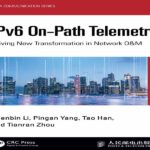
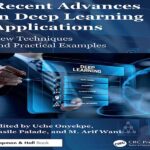


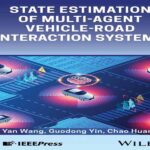



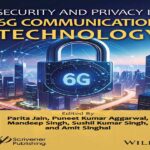
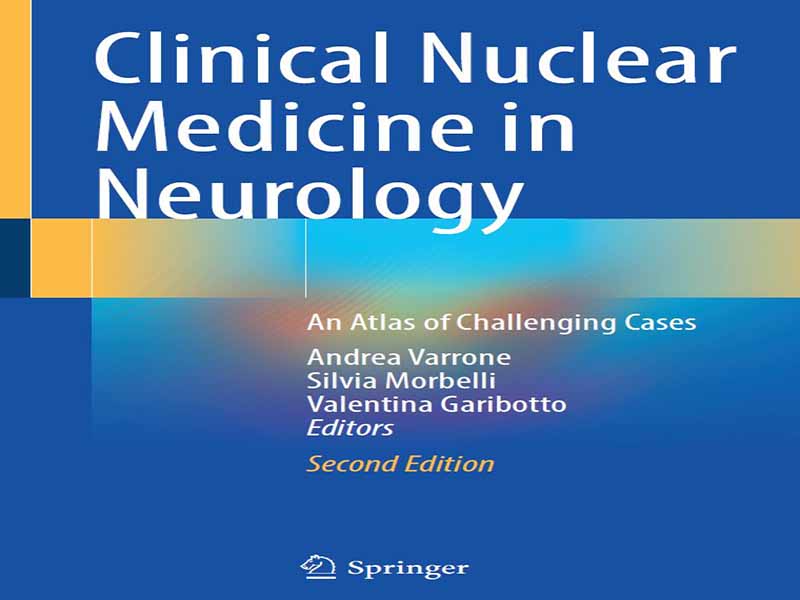


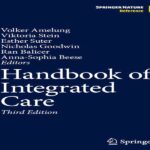




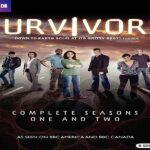












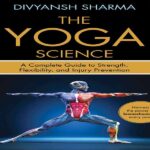
نظرات کاربران